Marin Postu1, Cătălin Ușurelu2, Lucian Predescu1, Cristian Alexandru Udroiu3, Ștefan Moț4
1 “C.C.Iliescu” Institute for Emergencies in Cardiovascular Diseases, Bucharest, Romania
2 Emergency County, Hospital, Pitesti, Romania
3 University Emergency Hospital, Bucharest, Romania
4 Heart Institute, Cluj, Romania
Abstract: The article summarizes the activity of interventional cardiology centers of Romania during the 2014-2015 periods. Data collection was based on the direct reports from the centers, representing all geographic regions of the country.
Keywords: interventional cardiology, reports, percutaneous coronary interventions
Interventional cardiology specialty in Romania was implemented relatively recently, and it became an area of dynamic development in the last few years. The introduction of the National Program for Interventional Treatment of Acute Myocardial Infarction, and the increasing number of procedures, requires new centers and interventional cardiologists. This report summarizes the data from 2014 to 2015 provided, at the request of the Interventional Cardiology Working Group (ICWG), by 29 out of 35 public and private interventional cardiology centers of Romania (Figure 1). This is a prospective observational registry study, which enrolls all consecutive patients in cardiac catheterization laboratories in Romania since 2014 to 2015. All public and private interventional cardiology centers have received from ICWG a questionnaire to answer specific questions about the activity in the local cath lab. The focus of the requested elements was to determine the status of the logistics (number of departments, cath labs and interventional cardiologists), the volume of the procedures and the type of percutaneous interventions (elective or urgent, coronary or peripheral). The results collected from each center are presented in Table 1 and are summarized in Table 2. Currently, there are 35 public and private centers in Romania. In 29 centers that provided the reports, work 86 independent interventional cardiologists and 54 specialists in training. During 2014-2015, in these laboratories were performed a total of 40,594 diagnostic and therapeutic percutaneous procedures, including 13,110 Percutaneous Coronary Interventions (PCI) (total number probably would have been about 15,000, if all the centers have reported the data); 5,983 cases of primary PCI (pPCI) were performed on patients with ST segment elevation myocardial infarction (STEMI) (total number probably about 6500 cases). Thus, estimated number of PCI procedures per million people in Romania is approximately 750 cases and pPCI in STEMI of 325 cases. The data presented in Table 3 show that over time the number of angioplasties increased by 26%, from 11876 cases in 2013 to about 15000 cases in 2014. However, when compared to the figures from the neighboring countries, the number of procedures in Romania is significantly lower. Thus, in 2011 the number of pPCI per million population in Bulgaria was 650 (1), while in 2014 in Romania there were only 325; the number of angioplasties per million population in 2011 in Poland was 2550 (2,3), while in 2014 in Romania – 750. In these countries, a sound evidence-based approach using National Registry data is applied to monitor and improve interventional cardiology services (4).
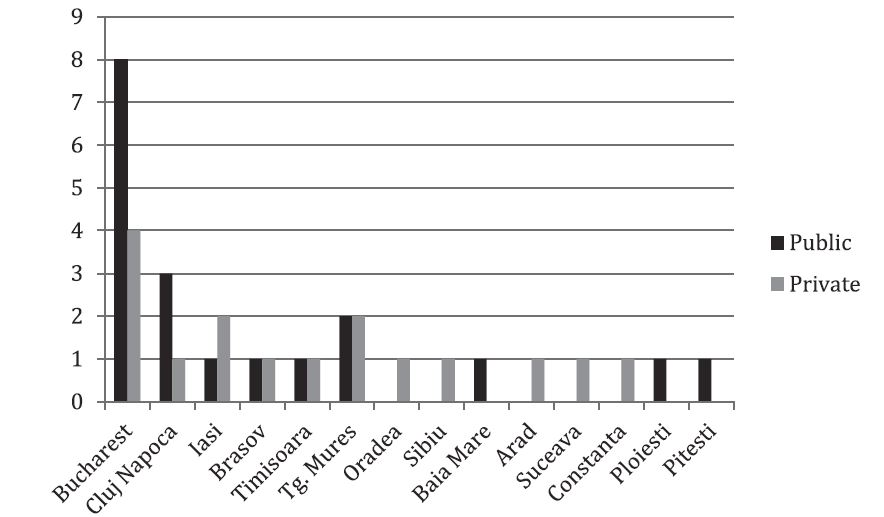
Figure 1. Interventional Cardiology Centers in Romania (the number of public and private cath labs available in each city).
Table 1. Reported data from Interventional Cardiology Centers
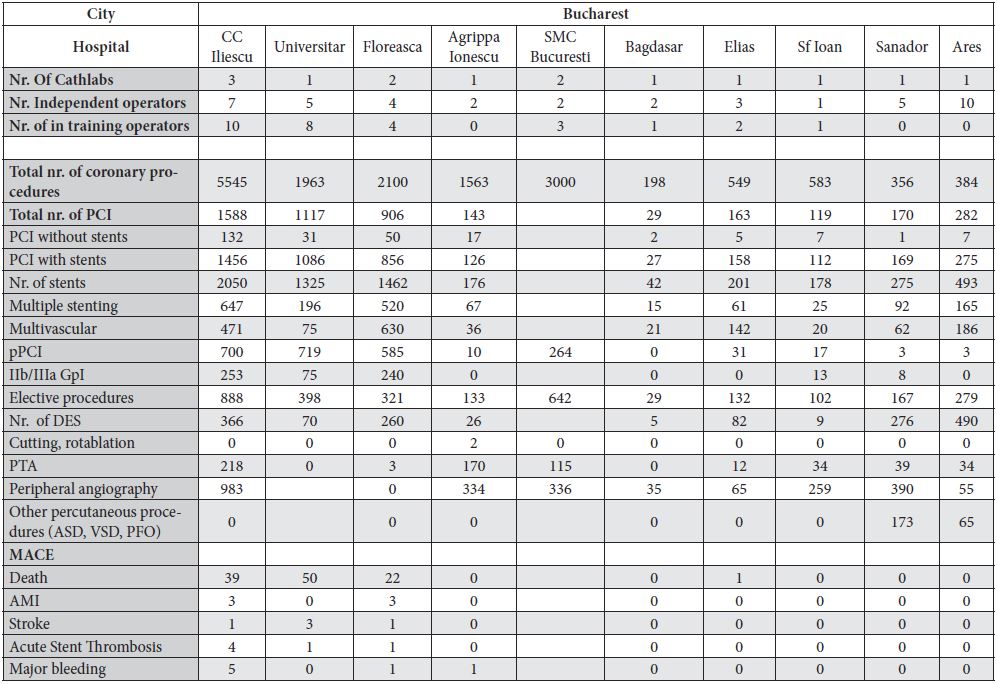
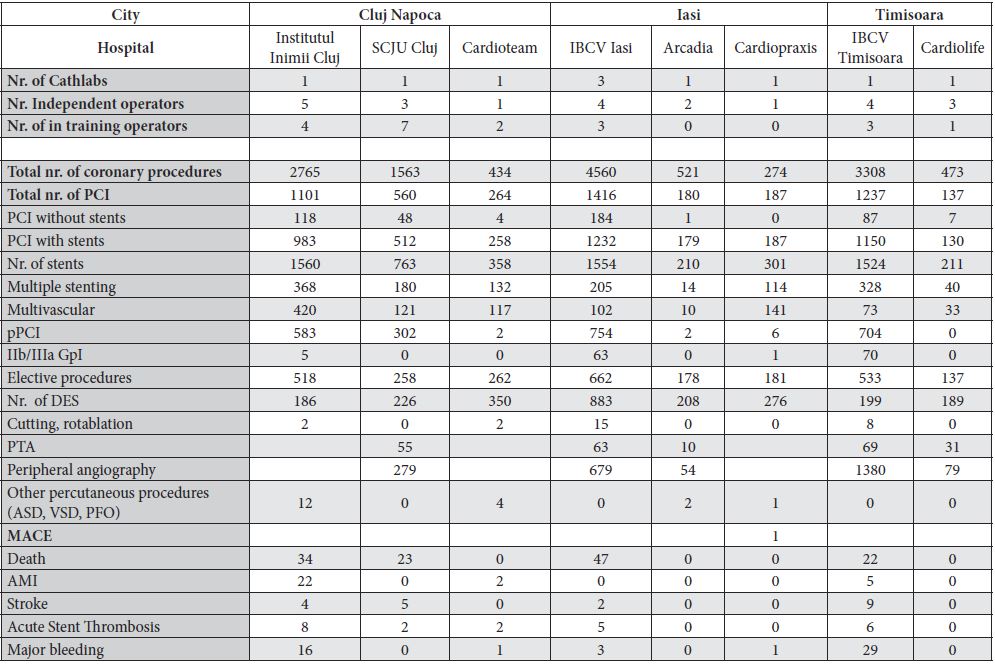
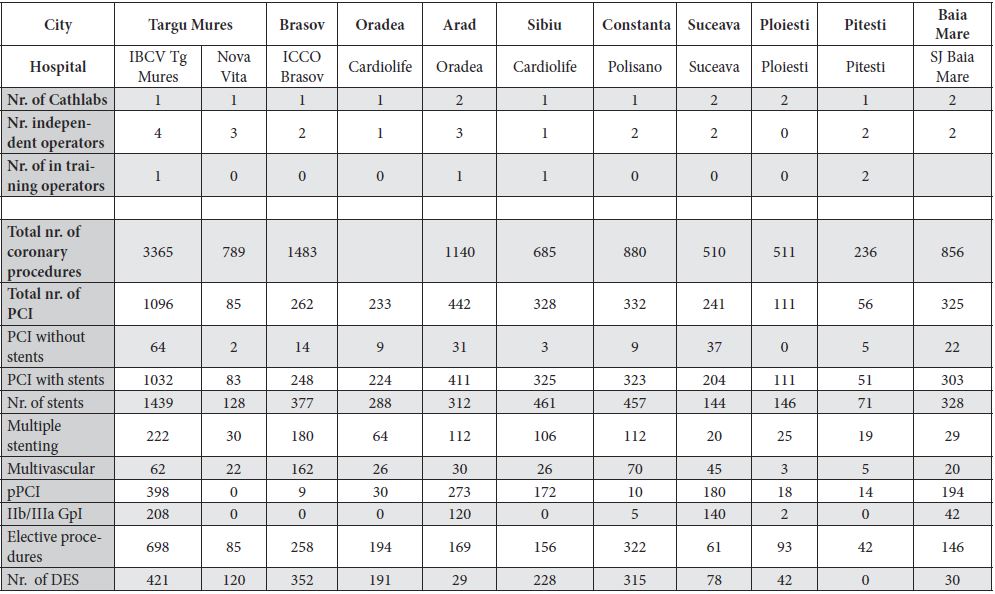
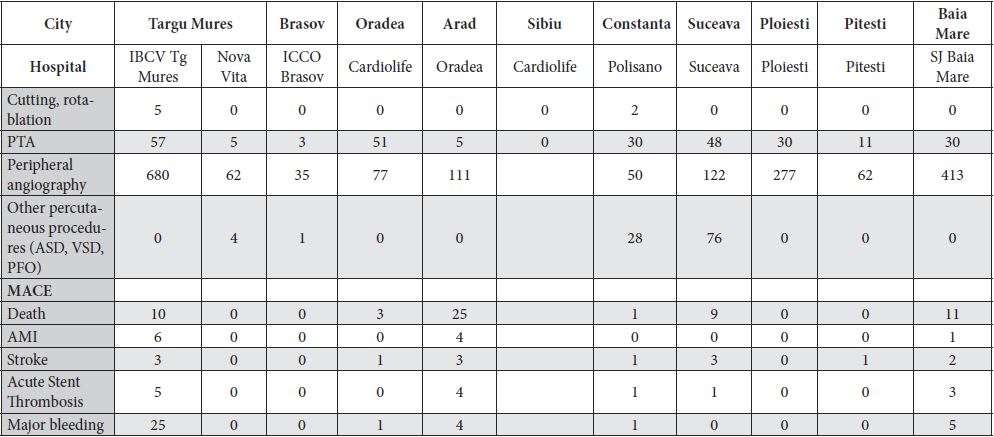
PCI – percutaneous coronary intervention, pPCI – primary PCI, Gp IIbIIIa – IIb/IIIa glycoprotein inhibitors, DES – drug eluting stent, Cutting – cutting balloon dilatation, PTA – peripheral transluminal angioplasty, ASD – atrial septal defect, VSD – ventricular septal defect, PFO – persistent foramen ovale, MACE – major adverse cardiac events.
Table 2. Summarized data for Romania
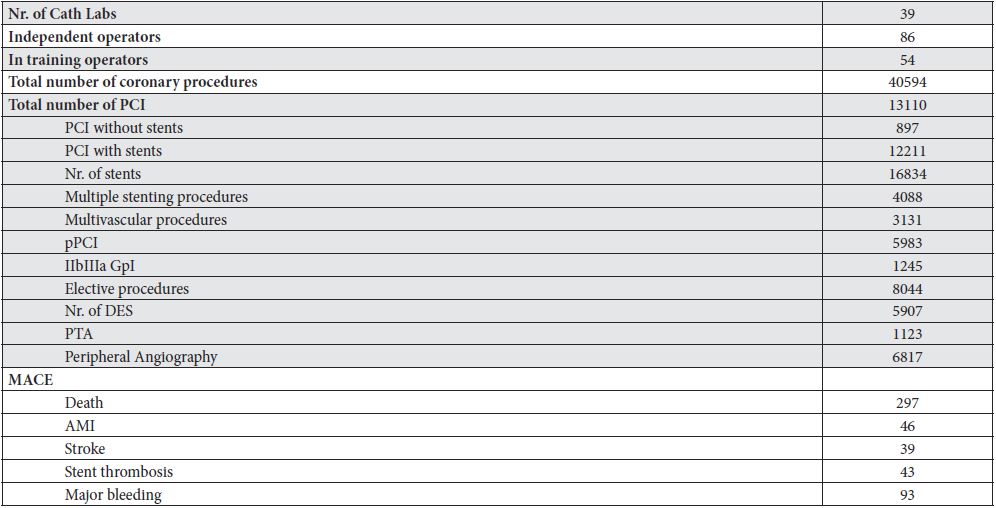
PCI – percutaneous coronary intervention, pPCI – primary PCI, Gp IIbIIIa – IIb/IIIa glycoprotein inhibitors, DES – drug eluting stent, PTA – peripheral transluminal angioplasty, MACE – major adverse cardiac events.
Table 3. Total number of PCI in Romania

The data analysis in this study is limited to those centers that actively responded to the request from the ICWG; 6 centers did not participate or provided poor quality data not feasible for the analysis. The improvements can be achieved through a sound evidence-based approach. The progress of Romanian interventional cardiology from 2005 till 2015 is significant in terms of absolute number of angiography and PCI procedures as well as number of active cath lab centers. Th e registry can help monitor the activity of different cath labs, to identify country regions not well covered by STEMI program or with poor interventional facilities, to monitor the outcomes according to the volume of the center, number of operators and number of interventional cardiologists in training. In conclusion, implementation of a Mandatory Interventional Cardiology National Registry, capable of monitoring objectively these key health care services in a standard manner, can be the avenue to guide further development of the interventional cardiology in Romania.
Conflict of interest: none declared.
References
1. Mandelzweig L, Battler A, Boyko V et al. Euro Heart Survey Investigators. The second Euro Heart Survey on acute coronary syndromes: Characteristics, treatment, and outcome of patients with ACS in Europe and the Mediterranean Basin in 2004. Eur Heart J. 2006; 27: 2285-2293
2. Siudak Z, Ochała A, Lesiak M et al., Temporal trends and patterns in percutaneous treatment of coronary artery disease in Poland in the years 2005-2011, Kardiol Pol. 2015 Mar 3
3. Dudek D, Legutko J, Siudak Z et al. Interventional cardiology in Poland in the year 2011. Summary report of the Association of Cardiovascular Interventions of the Polish Cardiac Society. Kardiol Pol. 2013;71:1213-1219. doi: 10.5603/KP.2013.0313
4. European Perspectives, Cardiology in Practice in Europe 2011: Acute ST Elevation Myocardial Infarction, Circulation. 2011;124:f85-f90
 This work is licensed under a
This work is licensed under a